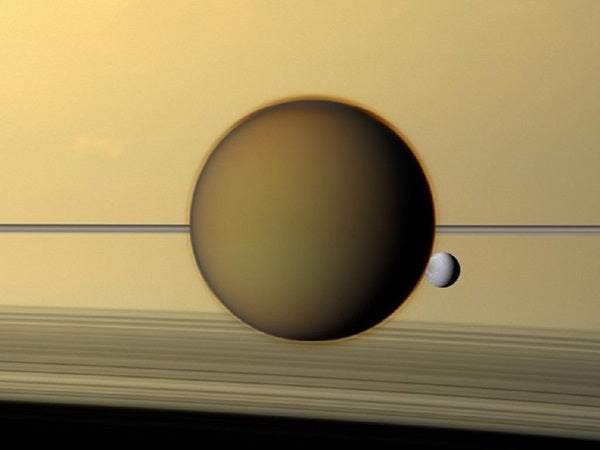The release includes images of satellite conjunctions in which one moon passes in front of or behind another. Cassini scientists regularly make these observations to study the ever-changing orbits of the planet’s moons. But even in these routine images, the saturnian system shines. A few of Saturn’s stark, airless, icy moons appear to dangle next to the orange orb of Titan, the only moon in the solar system with a substantial atmosphere. Titan’s atmosphere is of great interest because of its similarities to the atmosphere believed to exist long ago on the early Earth.
While it may be wintry in Earth’s Northern Hemisphere, it is currently northern spring in the saturnian system, and it will remain so for several Earth years. Current plans to extend the Cassini mission through 2017 will supply a continued bounty of scientifically rewarding and majestic views of Saturn and its moons and rings, as spectators are treated to the passage of northern spring and the arrival of summer in May 2017.










